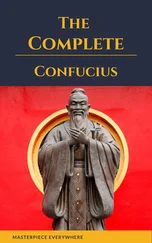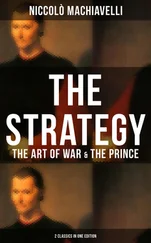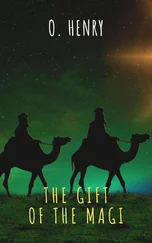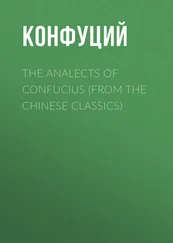(i) The earliest mention of the classic is found in the Official Book of the Kâu dynasty, where it is said that, among the duties of 'the Grand Diviner,' 'he had charge of the rules for the three Yî (systems of Changes), called the Lien-shan, the Kweî-ȝhang, and the Yî of K âu; that in each of them the regular (or primary) lineal figures were 8, which were multiplied, in each, till the), amounted to 64.' The date of the Official Book has not been exactly ascertained. The above passage can hardly be reconciled with the opinion of the majority of Chinese critics that it was the work of the duke of K âu, the consolidator and legislator of the dynasty so called; but I think there must have been the groundwork of it at a very early date. When that was composed or compiled, there was existing, among the archives of the kingdom, under the charge of a high officer, 'the Yî of K âu,'--what constitutes the Text of the present Yî; the Text, that is, as distinguished from the Appendixes. There were two other Yî, known as the Lien-shan and the Kwei-ȝhang. It would be a waste of time to try to discover the meaning of these designations. They are found in this and another passage of the Official Book; and nowhere else. Not a single trace of what they denoted remains, while we possess 'the Yî of K âu' complete 6.
(ii) In the Supplement of Ȝo Kh iû-ming to 'the Spring and Autumn,' there is abundant evidence that divination by the Yî was frequent, throughout the states of China, before the time of Confucius. There are at least eight narratives of such a practice, between the years B.C. 672 and 564, before he was born; and five times during his life-time the divining stalks and the book were had recourse to on occasions with which he had nothing to do. In all these cases the text of the Yî, as we have it now, is freely quoted. The 'Spring and Autumn' commences in B.C. 722. If it extended back to the rise of the K âu dynasty, we should, no doubt, find accounts of divination by the Yî interspersed over the long intervening period. For centuries before Confucius appeared on the stage of his country, the Yî was well known among the various feudal states, which then constituted the Middle Kingdom 7.
(iii) We may now look into one of the Appendixes for its testimony to the age and authorship of the Text. The third Appendix is the longest, and the most important 8. In the 49th paragraph of the second Section of it it is said:--
'Was it not in the middle period of antiquity that the Yî began to flourish? Was not he who made it (or were not they who made it) familiar with anxiety and calamity?'
The highest antiquity commences, according to Chinese writers, with Fû-hsî, B.C. 3322; and the lowest with Confucius in the middle of the sixth century B.C. Between these is the period of middle antiquity, extending a comparatively short time, from the rise of the K âu dynasty, towards the close of the twelfth century B.C., to the Confucian era. According to this paragraph it was in this period that our Yî was made.
The 69th paragraph is still more definite in its testimony:--
'Was it not in the last age of the Yin (dynasty), when the virtue of K âu had reached its highest point, and during the troubles between king Wăn and (the tyrant) K âu, that (the study of) the Yî began to flourish? On this account the explanations (in the book) express (a feeling of) anxious apprehension, (and teach) how peril may be turned into security, and easy carelessness is sure to meet with overthrow.'
The dynasty of Yin was superseded by that of K âu in B. C. 1122. The founder of K âu was he whom we call king Wăn, though he himself never occupied the throne. The troubles between him and the last sovereign of Yin reached their height in B. C. 1143, when the tyrant threw him into prison in a place called Yû-lî, identified as having been in the present district of Thang-yin, department of K ang-teh, province of Ho-nan. Wăn was not kept long in confinement. His friends succeeded in appeasing the jealousy of his enemy, and securing his liberation in the following year. It follows that the Yî, so far as we owe it to king Wăn, was made in the year B.C. 1143 or 1142, or perhaps that it was begun in the former year and finished in the latter 9.
But the part which is thus ascribed to king Wăn is only a small portion of the Yî. A larger share is attributed to his son Tan, known as the duke of Kâu, and in it we have allusions to king Wû, who succeeded his father Wăn, and was really the first sovereign of the dynasty of K âu 10. There are passages, moreover, which must be understood of events in the early years of the next reign. But the duke of Kâu died in the year B. C. 1105, the 11th of king Kh ăng. A few years then before that time, in the last decade of the twelfth century B. C., the Yî King, as it has come down to us, was complete 11.
5. We have thus traced the text of the Yî to its authors, the famous king Wăn in the year 1143 B. C., and his equally famous son, the duke of K âu, in between thirty and forty years later. It can thus boast of a great antiquity; but a general opinion has prevailed that it belonged to a period still more distant. Only two translations of it have been made by European scholars. The first was executed by Regis and other Roman Catholic missionaries in the beginning of last century, though it was given to the public only in 1834 by the late Jules Mohl, with a title commencing 'Y-King, antiquissimus Sinarum liber 12.' The language of the other European translator of it, the Rev. Canon McClatchie of Shanghâi, whose work appeared in 1876, is still more decided. The first sentence of his Introduction contains two very serious misstatements, but I have at present to do only with the former of them;--that 'the Yî King is regarded by the Chinese with peculiar veneration, . . . . as being the most ancient of their classical writings.' The Shû is the oldest of the Chinese classics, and contains documents more, than a thousand years earlier than king Wăn. Several pieces of the Shih King are also older than anything in the Yî; to which there can thus he assigned only the third place in point of age among the monuments of Chinese literature. Existing, however, about 3000 years ago, it cannot be called modern. Unless it be the books of the Pentateuch, Joshua, and judges, an equal antiquity cannot be claimed for any portion of our Sacred Scriptures.
It will be well to observe here also how much older the Text is than the Appendixes. Supposing them to be the work of Confucius, though it will appear by and by that this assumption can be received as only partially correct, if indeed it be received at all, the sage could not have entered on their composition earlier than B.C. 483, 660 years later than the portion of the text that came from king Wăn, and nearly 630 later than what we owe to the duke of K âu. But during that long period of between six and seven centuries changes may have arisen in the views taken by thinking men of the method and manner of the Yî; and I cannot accept the Text and the Appendixes as forming one work in any proper sense of the term. Nothing has prevented the full understanding of both, so far as parts of the latter can be understood, so much as the blending of them together, which originated with Pî K ih of the first Han dynasty. The common editions of the book have five of the Appendixes (as they are ordinarily reckoned) broken up and printed side by side with the Text; and the confusion thence arising has made it difficult, through the intermixture of incongruous ideas, for foreign students to lay hold of the meaning.
6. Native scholars have of course been well aware of the difference in time between the appearance of the Text and the Appendixes; and in the Khang-hsî edition of them the two are printed separately. Only now and then, however, has any critic ventured to doubt that the two parts formed one homogeneous whole, or that all the appendixes were from the style or pencil of Confucius. Hundreds of them have brought a wonderful and consistent meaning out of the Text; but to find in it or in the Appendixes what is unreasonable, or any inconsistency between them, would be to impeach the infallibility of Confucius, and stamp on themselves the brand of heterodoxy.
Читать дальше












